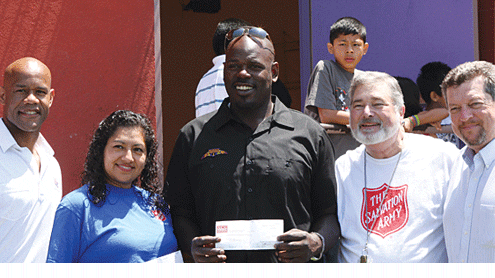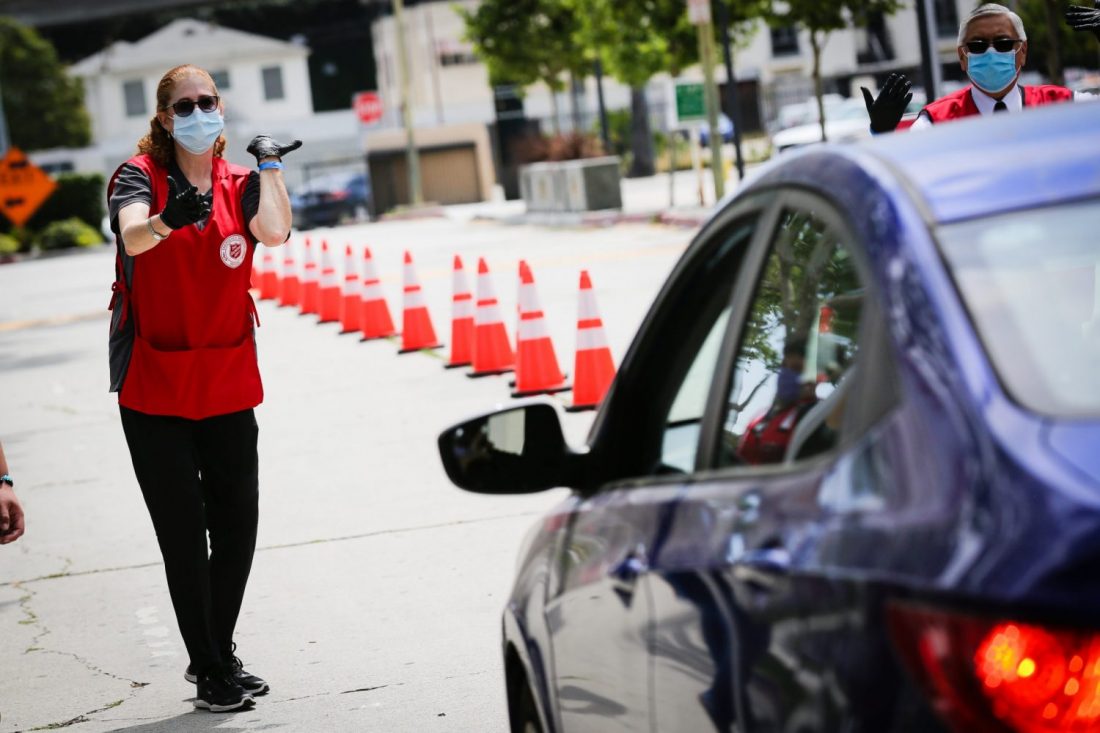By Frances Dingman –
It has been 75 years since the first “annual” Western Territorial Congress of 1922, held in San Francisco, Calif. While small compared to the Great Victory Congress, it made up in fervor for what it lacked in size. The War Cry trotted out its most florid prose to describe the Salvationists “all the way from the Mexican border to the Canadian line, and from Montana’s snow-bound ranches to the sunkist fields of Arizona” trekking into the mecca of Western Salvationism to see and hear the national leader, Commander Evangeline Booth.
Officers were admonished to be punctual at all meetings, whether public or private; to wear full regulation uniform: the bonnet for women and the tunic buttoned for men if not wearing red guernsey or vest. Officers were not to “stand about chatting or idling during prayer meetings.”
There was a “mighty cheer and affectionate welcome” from people who, waiting almost in breathless expectancy, greeted Commander Booth, with territorial leaders Lt. Commissioner and Mrs. Adam Gifford and Colonel and Mrs. Bernard Turner, who had gone to Benecia to accompany her on the last leg of her journey.
Booth spoke of “reading your welcome in the beautiful foliage and color of your unfading flowers” and recalled when she had “rushed across the continent to you in the wake of that terrible, heartbreaking disaster,” the earthquake of 1906.
Market Street was cleared for the big parade on Saturday. Led by mounted police and the Stand of Colors, it was enhanced by the Staff Band, led by the legendary Major Ernest “Dutch” Higgins. Adding volume and spirit were the Oakland, Los Angeles, Washington and Lytton Boys’ Bands. Floats representing various phases of Army work included youth, prison work, (striped suits borrowed from San Quentin) women’s and men’s social, naval and military were interspersed with leaders’ cars and groups of marching officers, and Excelsior Session cadets in spick and span uniforms. Soldiers included those of the Japanese Division, who “did Ensign Kobayashi proud.” Ensign Della Rapson, the “Doughnut Queen” of the recent Great War, dispensed sweet treats from the military float along the line of march.
Councils for officers and soldiers were enlivened by the words of Gifford and the Commander. Booth met the young people in a special council in which she captivated them with stories of David slaying Goliath and protecting his sheep. A little girl in native garb, representing the Chinese children who were being brought to Christ, presented her with a bouquet of roses.
On Sunday night, San Francisco Advisory Board Chairman the Hon. John L. McNab presented the Commander as “Miss Booth in Rags,” her famous dramatization in which she told the tale of “a broken heart, with songs of love.” The great Civic Auditorium was taxed to capacity with 10,000 eager listeners. Tears flowed copiously as she spoke, and applause was frequent and universal. The ragged costume recalled the time when she had helped to begin the slum work on the dark streets of London, dressed as a humble flower seller.
The Trade Department advertised the “Salvation Army Lassie Lamp” for $5- “Every officer should have one of these in their quarters.” Also there was a Morocco brief bag for Song Book and Bible for $6.00. “We shall be pleased to see you and look into your smiling face.”
The Commander moved the Commonwealth Club to tears and cheers when she told about “the little seedling dropped in the gutter in London has become a great oak drawn from the masses of all the colors and tongues throughout the world…” What a guest to have for a Congress that was made greater by her coming!
For two months, Booth remained in the territory, touring from Seattle to Idaho, Southern California, Albuquerque, Denver and Colorado Springs.
photo courtesy of Western Territorial Museum












